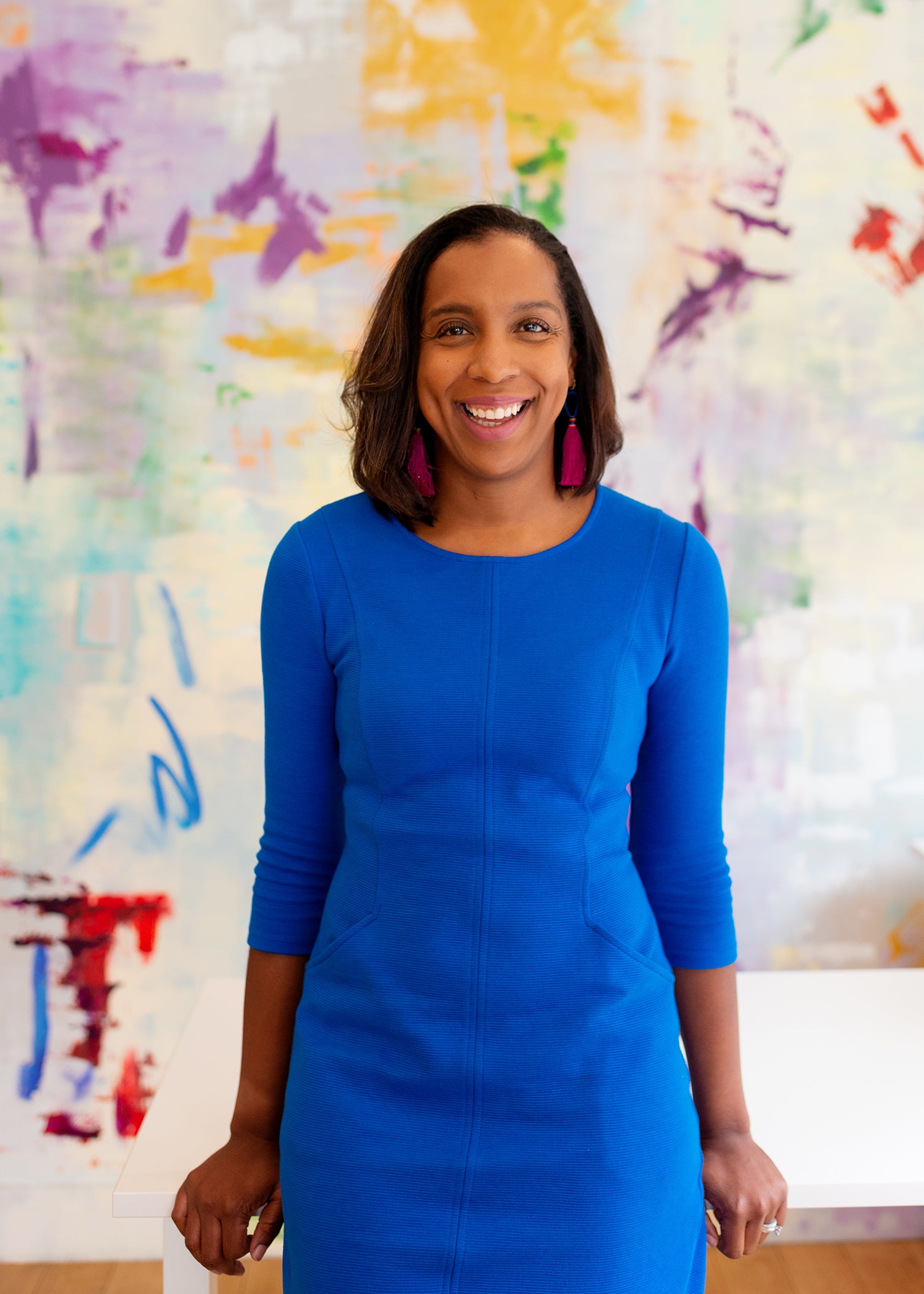The 50 States Project is a yearlong series of candid conversations with interior designers across the country about how they’ve built their businesses. This week, Oakland, California–based designer Kelly Finley of Joy Street Design tells us why she doesn’t bill hourly, how she found community in the Black Artists + Designers Guild, and why she started a nonprofit to support women’s shelters.
What are the earliest memories you have of being creative or interested in design?
I’m probably the opposite of most designers in that I don’t have many memories of being creative as a child. I have a twin brother who is very creative—he can draw, he’s a barber that can cut waves into your hair, that’s just the kind of person he is. I was always the nerd—the math and science person, collecting trophies that probably should have gotten me beaten up as a kid. We were both very comfortable with what we were doing in our lives.
Fast-forward 20 years, I have graduated from Stanford Law, I’m working at a law firm, and I just had a horrible case and needed a break. I was like, “You have to do something for yourself.” I walked into UC Berkeley Extension and decided to take a class in drafting.
So you picked the most analytical entry point into this business.
Exactly. I took the class and was like, This is magical. So I took another class, and then another. In one of the classes, I had to learn how to draw in charcoal. I remember the first time I had to go to my charcoal class—drawing a silhouette in charcoal on this massive paper was a very rewarding moment, and I wasn’t as bad as I thought I’d be. I even told my brother, “I actually have an artistic bone in my body!”
You ended up taking enough classes to get another degree?
I did two and a half years’ worth of course work. I had two more classes left to get the certificate in interior design and architecture when we moved to Los Angeles, and they wouldn’t honor my classes at UCLA. When we came back to the Bay Area five years later, I went to go take those two classes, just because I’m a finisher—but then I realized that I didn’t care. I had a baby by then and it was like, “You want me to come and take a class on the history of architecture for three hours, twice a week?” Nope. I already have clients.
Were you still working at the law firm when you were taking those classes originally?
I was working at a big law firm—60 to 80 hours a week, running cases and doing trials, and I did these classes on the side. Initially, I did one course, which was perfectly reasonable. Then I did two, and then towards the last year, I was doing three per semester. I was finding myself literally running to class, which was four blocks from my office—and every once in a while, when I would see people I knew [from work], I’d have to pretend I was getting take-out to go back to the office. I remember pulling an all-nighter one time to finish a presentation for a class even though I should’ve been writing a brief for work. My priorities were really complicated.
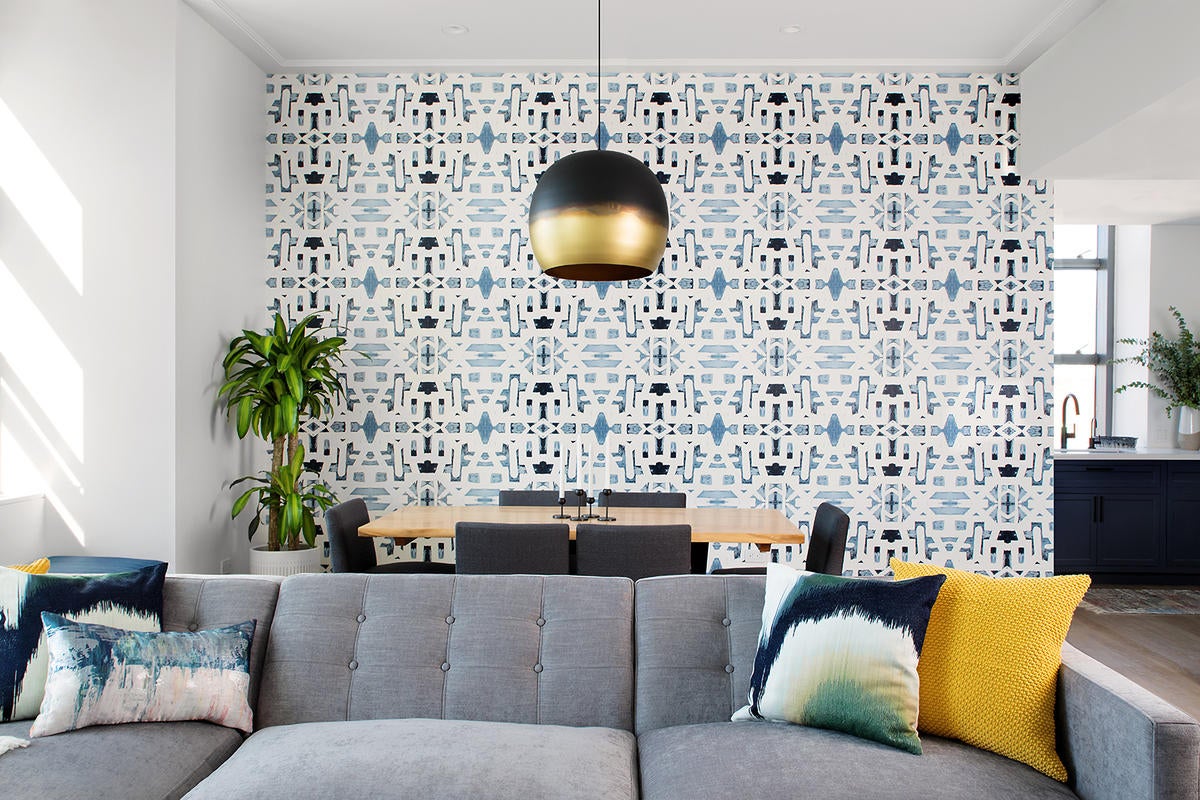
By that point, were you thinking that this was more than just a hobby?
Even though I was doing this crazy stuff, pulling all-nighters to do those old-school design boards, I was still like, “This is for fun.” I thought, I’m just really enjoying this, and maybe I would design for friends on the side. But in my mind, I was not going to give up on a legal career to go and do this.
What changed your thinking?
My husband got a job in L.A. I stayed at the law firm for six months and then we decided we didn’t want to be apart. I was like, “I’m coming down—and instead of finding another law job, I’m going to try design.” For the next six months, I saved my money and made a nest egg so that I could go out and to do this on my own instead of looking for another job.
How did that go?
When I got to L.A., I interned for a couple people—a linen shop in Beverly Hills and then a small design firm. Because I had saved up, I was able to do all that stuff for free to learn more about the industry.
It was a blessing that my husband got that job, because it allowed me to take a step back. If I had stayed in the Bay, I would have never been comfortable enough to leave my law career and incur the judgment—even my own judgment. Even in L.A., it was a lot [to work through]. Somehow, in every conversation, it would always come up that I went to Stanford Law School. It took me a few years to become very confident at what I do and who I am. And I think if I had stayed here, I would have never made that change.
What was the game plan to get those early clients and get the firm off the ground?
I had a business plan—I’m that type of person—but I had no real idea. I started blogging about the renovation that we were doing on our house, because we had bought a fixer-upper. Then, one person from my old law firm moved to L.A., too, and they were like, “We need a house.” It was my first real project. It was a full home renovation, with a kitchen and three baths. Everything needed to be touched, and it was an amazing opportunity.
I joke about how, when I was writing the business plan, why wasn’t that my business plan? Reach out to the people you know that have money. That’s what you should do. Anyway, that’s essentially what happened, and it snowballed from there.
When did you know it was really going to work?
I had a daughter in the meantime, so I was having a babysitter for two or three hours a day so I could go and visit a job site. Then I would come home and essentially be a stay-at-home mom while doing the work. After that project, I started getting one or two projects here or there, which was perfect for my lifestyle at the time. We stayed in L.A. for five years, and it wasn’t until we moved back to Oakland, to the Bay Area, in 2015, that everything took off.
How did that happen?
I needed to make a decision to do this or don’t. I started to do a little bit of marketing—I was like, I’m going to start putting myself out there, and I was here less than a month when I started getting caller after caller after caller. But it wasn’t until I made that decision to really stop treating design like a side gig that it happened. Some of that was because I had a new baby, obviously, but it was also the fact that people knew me as an attorney, and I thought that if I was going to do this and be able to hold my head up high, I had to be able to say that I am doing something and it’s a big deal and I’m making it work. That’s what really infused my desire to make it real.
So, that change in attitude changed your approach?
Yes, completely. I hired a business coach, started paying for advertising, started going to [events] and being much more engaged as a businessperson, too. I got really serious about the business aspects. I love being a CEO of my business, so I’m always trying to be a better leader and a better student of that. I still do that—I spend a ton of money every year on that.
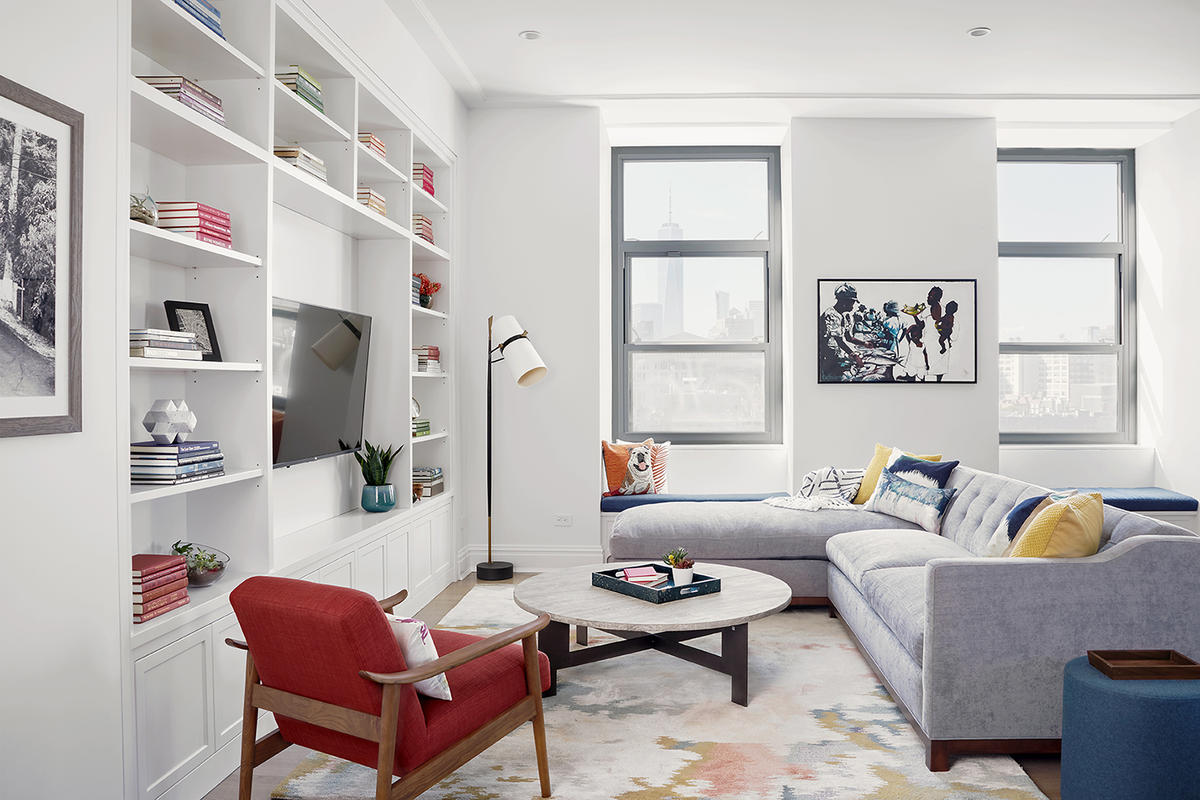
What does your team look like today?
I have five employees: two designers, a design assistant, a studio manager and an operations manager, plus me.
At the heart of our firm is the studio manager. I hired her as an assistant, and she’s grown with me as the firm has grown. She’s helped me put systems in place, and now she does all intake of potential clients, schedules everything and is our client liaison in every aspect. She does all of our ordering and procurement. The operations manager is a new hire in the last three months, and she is responsible for getting us up to snuff. We’ve been kind of running like a small firm for the last two years, and we need to get our processes right and get some real accountability. And then the two designers and a design assistant are doing designs. I also have an external CFO and an SEO specialist that we pay every month.
What is an external CFO, exactly?
I had a bookkeeper, but I realized I needed somebody to break down more than that for me. I have a business degree, but I don’t want to do that every day—I [just] want to know it on a high level. So this person, she does our bookkeeping, too, because she has a great understanding, she talks to my tax adviser. We make decisions about what I’m going to do throughout the year, and she also meets with me twice a month. We talk about trends and she’ll tell me when I’m over budget. This morning, I said, “Hey, I think I need to hire somebody—can we jump on a quick call?” So she’s going to put together a report to tell me how I can make it happen.
As in, “This much more revenue would need to come in to support the person doing X.”
Exactly. She also gave me one of those reports last year, too, and I didn’t end up hiring somebody, but it basically said, “You have enough to support this salary.”
And that’s a contract position?
Yes, she’s a part-time contractor—probably less than 20 hours a week. But she comes in and does training for our team and our assistants.
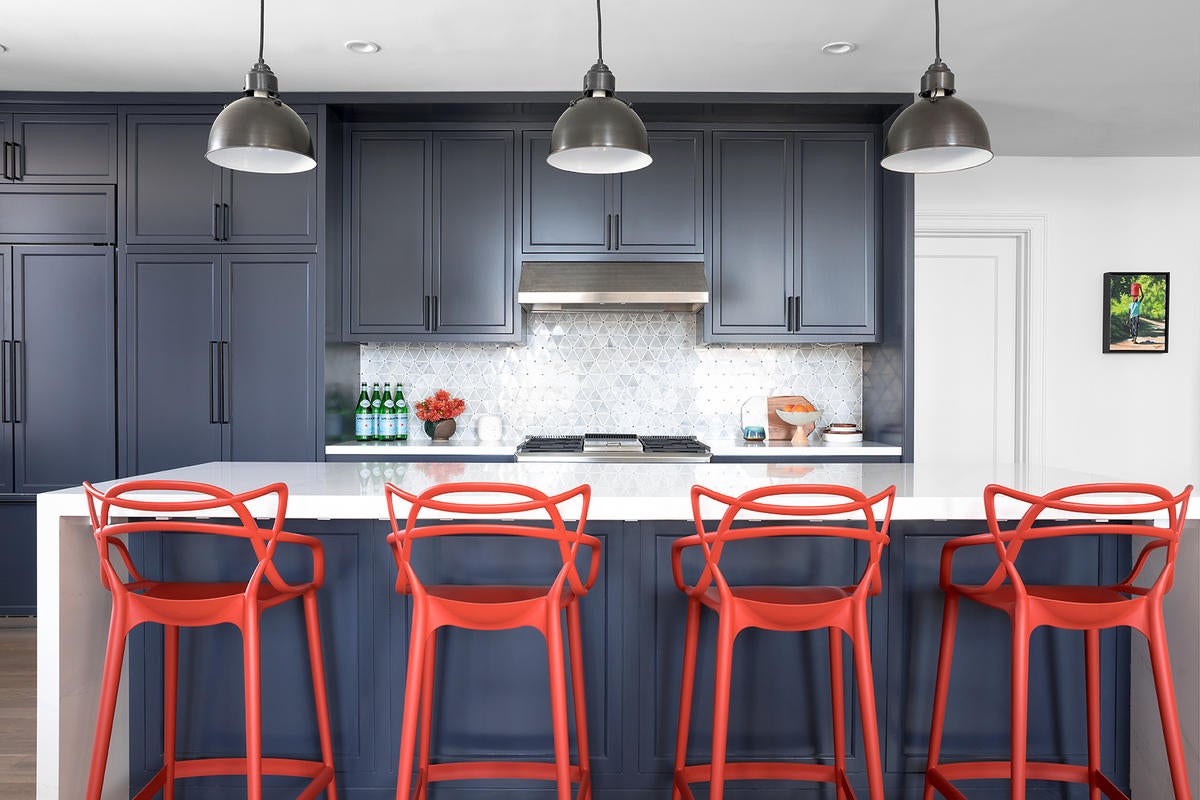
As the business has grown, what role have you carved out for yourself?
Right now we’re in a huge work period—we went from four to six people during the pandemic, and because we’re not all together, it’s pretty challenging. So right now, I am the rainmaker, obviously. I also still have my own projects. The goal is for me to become the creative director by July, so I don’t have to do individual projects every day, and then it’s really setting the standards for Joy Street Design. We do weekly meetings where the designers talk about their projects and what’s happening. I’m working towards getting to a point where I can let it go and trust that my staff can do it. It’s a learning process—everybody thinks that they’re the best at doing everything, and I am slowly recognizing that I’m not, and I don’t want to be.
I hear that. Letting go is so hard to do!
My plumbing specialist told me, “You need to give your team space to make mistakes.” I was like, “Yeah, but it’s my job.” He was like, “Yes, but until they can make mistakes, they’ll never learn.” When they make mistakes, most of us have a tendency to be like, “Oh, I wouldn’t have done it that way.” And you discount all the mistakes you make every day, right? It’s about giving your employees the power to do what they need to do, the space they need, and allow them to learn, and that’s what I’m really working on, because [without that] there’s no way that you can grow.
How have you developed your growth strategy?
I am a member of an entrepreneurs organization called EO, where you meet with people every month and talk about furthering your business. It’s like YPO [the Young Presidents’ Organization, a leadership community for chief executives who assume their role before the age of 45], but the membership threshold is $1 million, not $10 million or more. Nobody else in the group is a designer, it’s business in general, but you’re able to get feedback and it’s really rewarding because I don’t have to talk about things with a design mindset.
Sometimes designers think there’s only one or two ways to do something. With this group, I get the opportunity to engage with business leaders in different industries and see what they’re doing. That’s where I learned about external CFOs. Now I’m looking at possibly bringing on a part-time or fractional CMO. By constantly learning and being forced to put my numbers together every month to report to the group (we call it “the board”), I have a better understanding of my business and what I’m really trying to achieve.
Where did the firm’s name come from?
When I was an attorney, our first house was on Joy Street. When I started the firm and was starting to do stuff on the side, I couldn’t name it after me because I was an attorney! My husband was the one who said, “Why don’t we call it Joy Street?” We still own the house on Joy Street, so that’s amazing, and it makes me happy every time I see it.
Do you ever regret not naming the firm after yourself?
I’ve thought about changing it, but I love that it’s not my name—that other people can shine and that we can start highlighting other designers as well. The theory behind the firm is that we wanted to help people live their best life, joyfully. That doesn’t have to be from Kelly Finley, it just needs to be from Joy Street Design.
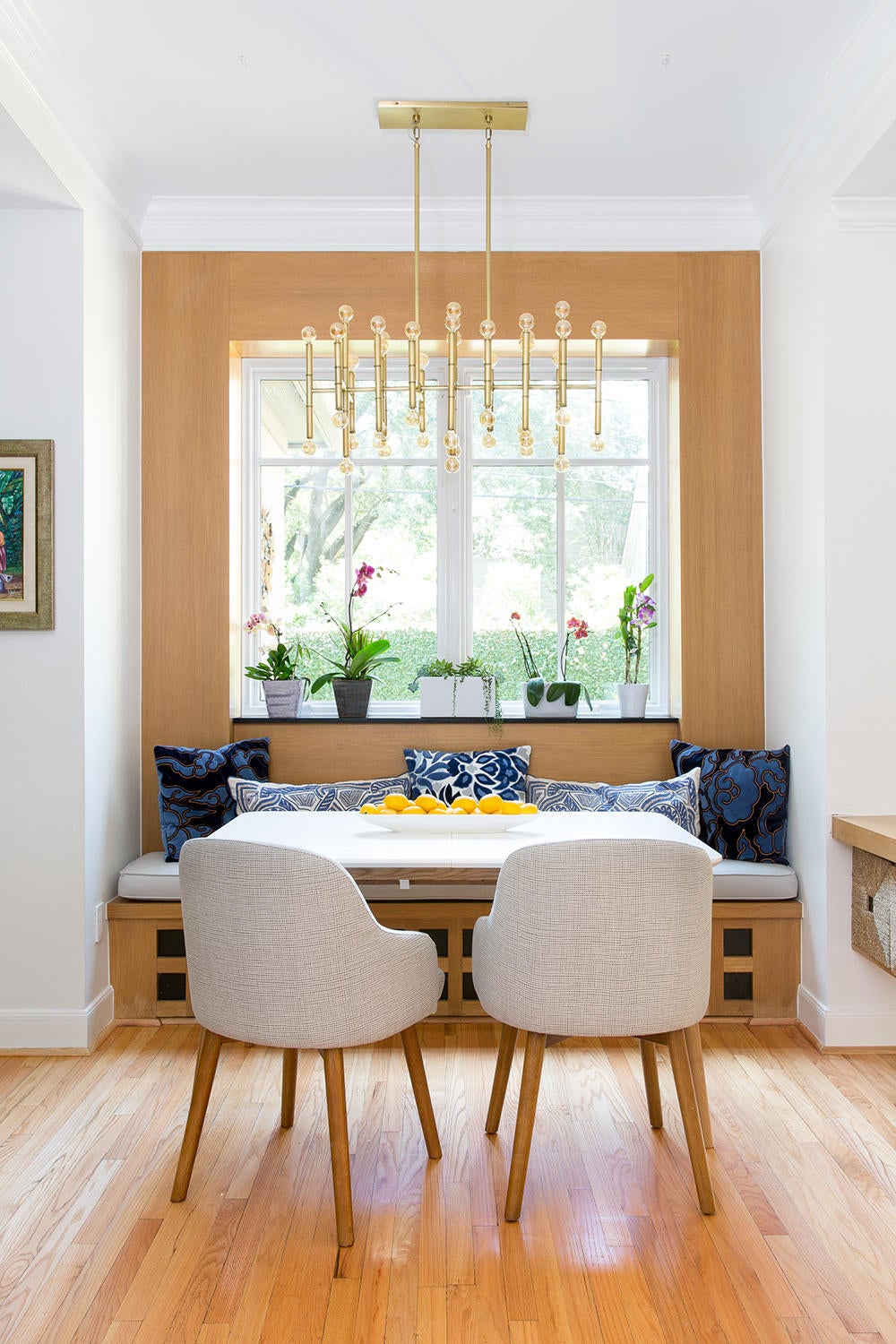
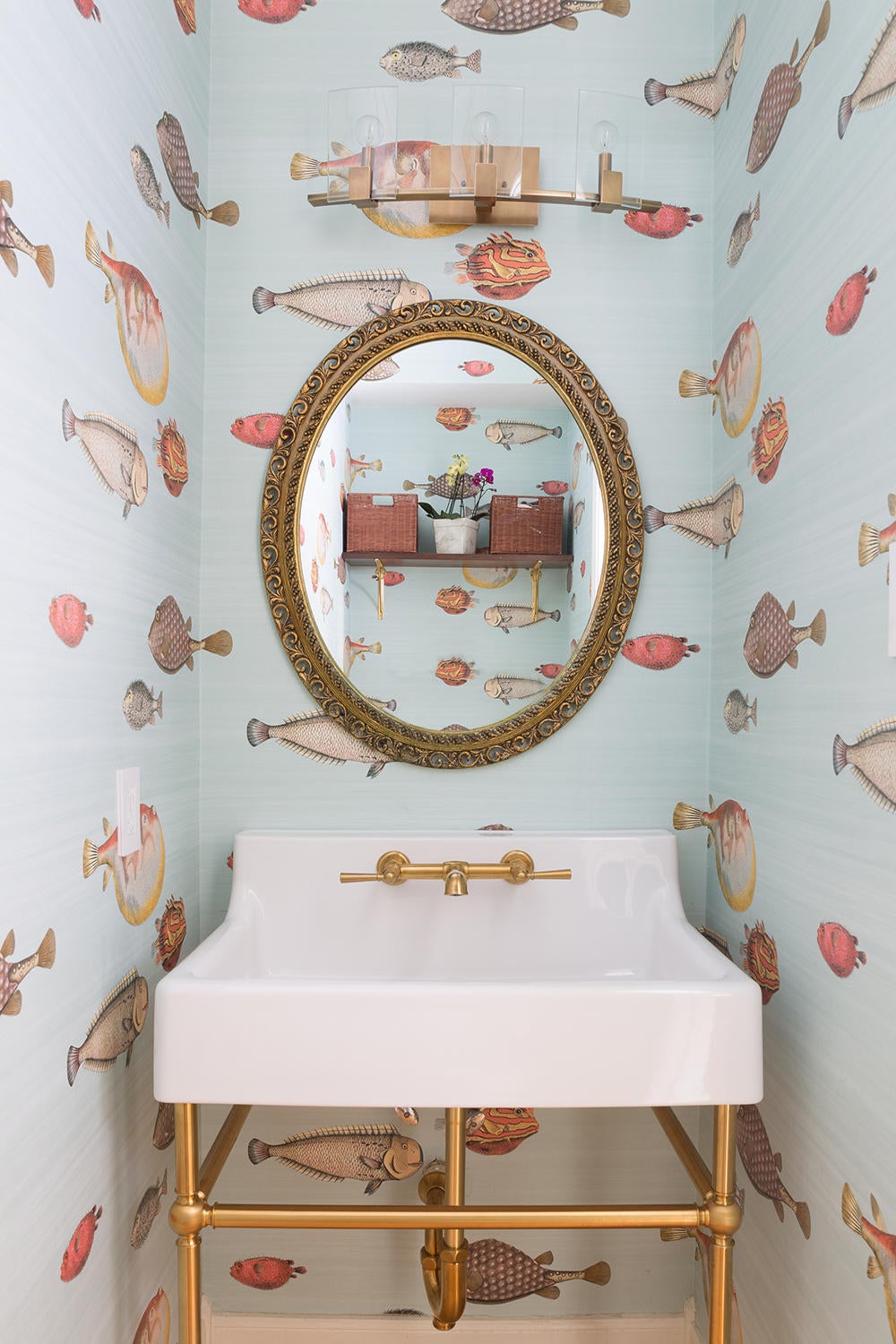
You mentioned an upcoming shift in your own role. What will becoming the creative director of your firm mean to you?
There’s a weird dynamic happening in my life right now, because I am moving to Atlanta. In August. My husband just got a job there, but I’m going to split my time. I’m keeping my place here so I’ll spend two weeks here, two weeks there. Because I won’t be here every day, I can’t be the only person making decisions.
I had decided to do this beforehand, but now I actually have to get serious, so what I think of as the creative director’s role is that I am leading the direction of the firm. But I am not necessarily holding their hand in every presentation, every consultation. So we still probably have our weekly meetings, and I will give my thoughts and opinion about what we show to clients and how we approach problems, but the designers get to have more control over what they do. I don’t need to be in CAD, I don’t need to be thinking about the fabric selection, they can present their fabric selection to me and get my approval.
Where do the clients see you? Or what’s your role in each of those projects?
Right now, I am the only person the client sees. I do the consultation, and they hire me. Then, we have our first meeting and I introduce them to the designer who’s going to be doing the legwork for them—that’s when we have what I call the transfer of trust.
As a client, you don’t want to be emailing me. You want to CC me so I know what’s going on, but you want to email the designer and studio manager to make sure this gets on the calendar and make sure things are heard.
Are clients encouraged to work that way because of differing hourly rates?
We don’t charge hourly, actually—I have PTSD from being an attorney. We charge a flat fee.
That’s so funny—I was thinking that you’d be an ace at time billing!
No, no, I have PTSD. I will never ever bill my time hourly. But in all fairness, I also think hourly billing is a perverse incentive—and I thought that even when I was an attorney, but also now as a designer—because the value that I provide is not based on hours.
Tell me more about that.
If I walk into your house and know exactly what you need because I’ve been doing this for 10 years, I’ve gone to the market and I’ve done everything I’ve needed, you still owe me that 20 percent of your project—and it’s not my fault it took me only five minutes.
I can draw a whole house in Revit in two, three hours. Is it fair that they only pay me for two to three hours of work? I don’t think so. So it’s always been about explaining the value I provide for clients. That’s what you pay me for [in] a flat fee. If you want a kitchen, it’s this; if you want a whole house, it’s that. For phase two, we charge a project management fee, which is 8 to 15 percent of the budget, depending on the size of the project—15 percent for projects under $100,000; 10 percent for projects that are $100,000 to $200,000; and 8 percent for projects over $200,000.
When you founded the firm, did you know that’s how you wanted to do it?
I definitely knew pretty quickly I would never work hourly. I mean, I came from a firm where I was billing in 6-minute increments—tenths of an hour. I was always really bad at keeping time, even then. I did my first project like that, and there were moments where you feel bad because you feel like it took you too long to do something, so you want to cut some of the time.
I think there’s something really interesting there, because did you ever feel guilty about the hours it took when you were in the legal field?
That’s a great question. And no.
Another thing about time billing is that not every hour is created equal. I’m an early riser, so if you catch me between 6 a.m. and 8 a.m., those hours are worth a lot. If you catch me from 6 p.m. to 8 p.m.—when I worked for a judge, he would sometimes say, “Is that a gin-and-tonic brief?” And it’s actually not fair to the client or to me. If I’m just in a zone and I do a bunch of work for them in two hours, great, but if I can’t catch a wave and it takes me six hours, it doesn’t make sense to me to charge them more for that.
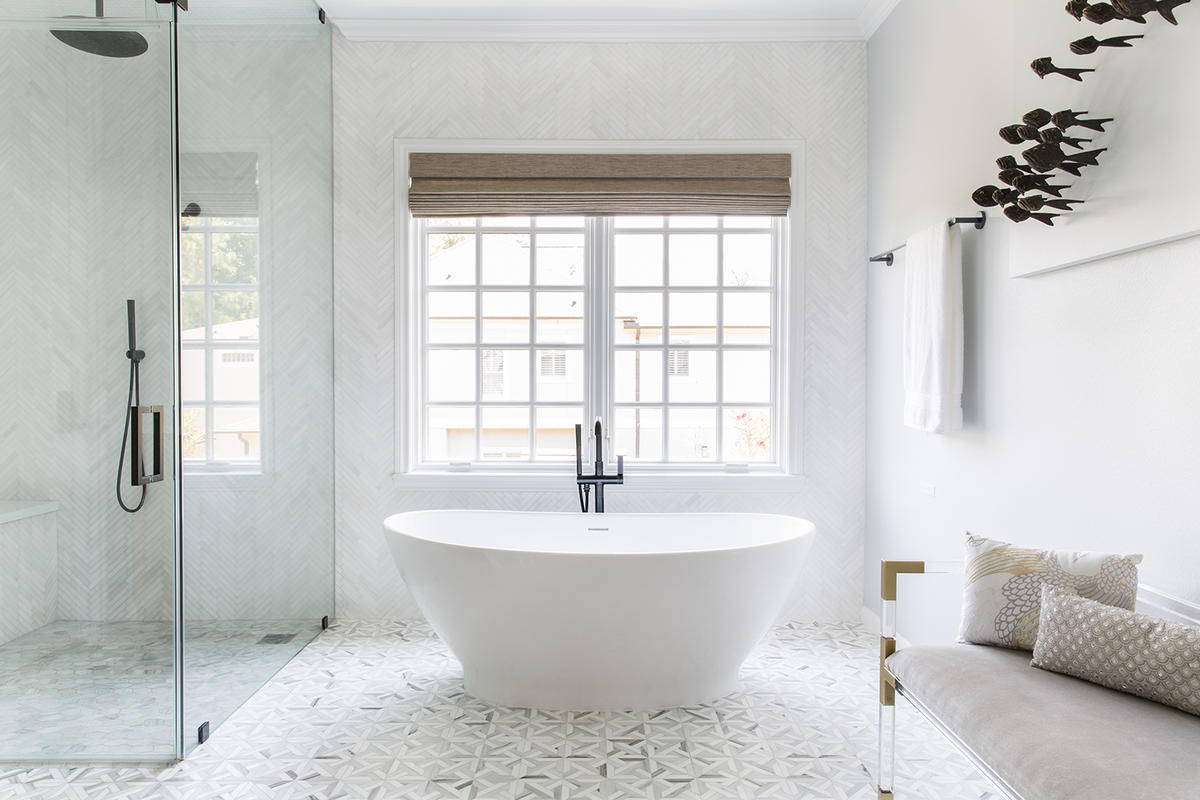
How does that flat fee change your relationship with your clients?
I am very transparent with my clients. I don’t want to ask them for money a lot of times, I don’t want them to have to worry about that, so we have essentially two fees. We take most of the money upfront for the first fee—that’s for the design work, and once they pay that, they get two or three months of work and they don’t have to think about a fee. And then it’s not until the construction phase is about to go that we’re asking for another fee.
What I tell my clients, truthfully, is that by having a flat fee, they know how much they’re going to pay me. They’re not going to get surprise after surprise every month; they’ll be able to say, “OK, my budget is this.” They can make a choice, and once they make that decision, nobody is going to spend more money. We may move stuff around—maybe the cabinets or the sofa cost a bit more than we thought—but ultimately, our goal is to be at the number they agreed to in that first meeting.
I like transparency. I hate when someone wants to charge me hourly—I don’t need to know all the details, but I want to know that you are on my side. That’s what I feel like we give clients. They know we are working on their side.
Have you ever been burned by that approach?
Yes. That’s the thing about a flat fee—people always say it sets you up for people who are indecisive, or who abuse the privilege of you coming to the sites too frequently. And I will admit that we have had a handful of people like that, but I also think there are some people who don’t require all that much of you—so if anything, and we make so much money on their projects that it balances out.
Sometimes it’s our fault, because we don’t set boundaries with the client, and it’s too late by the time we realize they are going to be one of those types of people. It’s the nature of business, and luckily I am a strong enough personality that I can nip it in the bud if it really gets outrageous. But it happens, I’m not going to pretend like it doesn’t. We’re in the middle of one right now. We finished the project two months ago—why are you still emailing us? But it’s also customer service, and we’re not going to turn them away.
I’m actually trying to go to a more extreme version, where we just tell every client that we want 25 percent of their budget. We won’t give you any additional bills—if you just give us 25 percent of that, we don’t talk about anything else.
Just one check?
One check. So I go back and forth, but ultimately, I think that’s a hard number to tell people upfront, so that’s why we don’t.
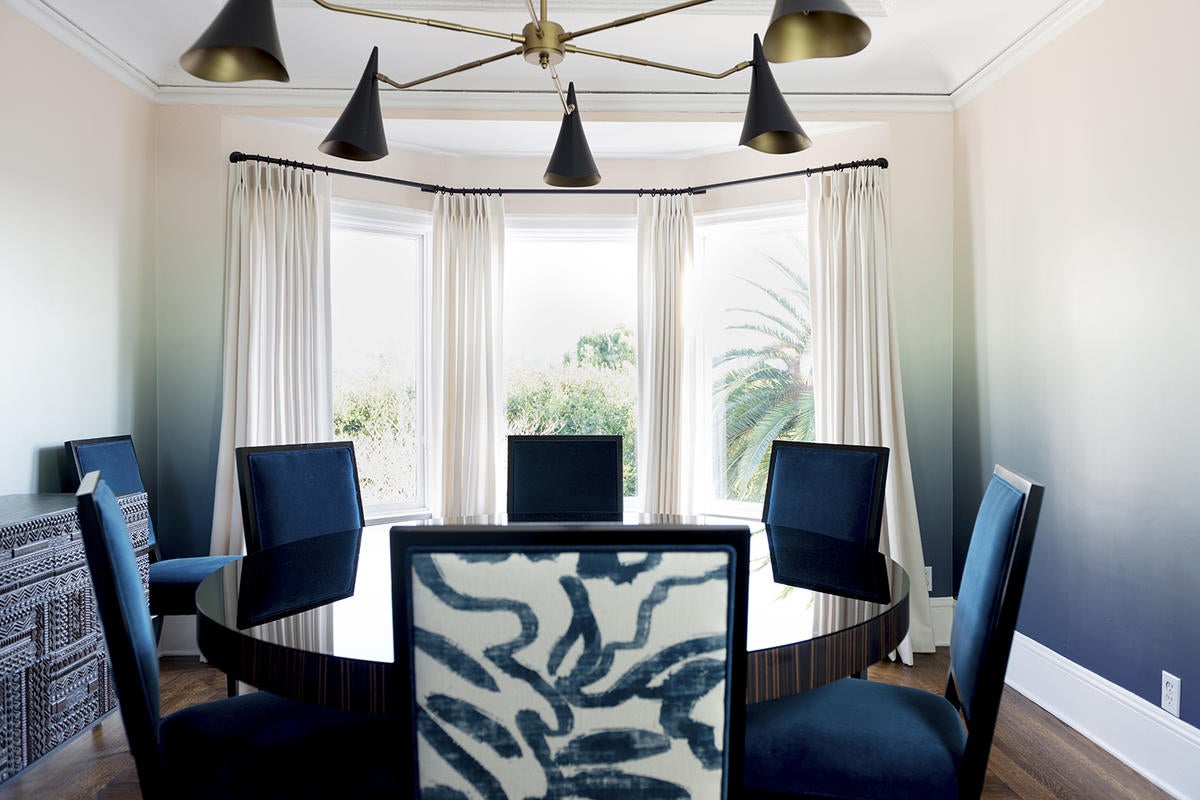
Can you tell me a little bit about your contract?
I’m a former attorney, so my contract is pretty long. It is about nine pages, single spaced. I update it after almost every project.
Does it safeguard against things that have gone wrong in the past, or is there a big-picture theme to what you’re putting down on paper?
It’s laying out the rules of engagement. We’re trying to explain to you how that process works. It also gives us a lot of freedom within that to do extra work for you—for example, even though it’s flat fee, if I’m doing a client’s kitchen and she’s like, “You know what, I also need some new dining room chairs,” I’m going to help her pick chairs, because I can see the dining room chairs from the kitchen. Having the contract the way we do gives us the freedom to do that. It’s not descriptive and it’s not hourly, so it allows us the flexibility to do what we want to make our clients happy.
It says we’re going to put a sign in front of your house, and post on Instagram but not use your name. It [includes] all the fees, our markup, cancellation of the contract. We also send clients several other documents at the same time—a welcome letter, a rules of engagement form, and some one-pagers.
What’s the most important clause in there to you, right now?
Oooh, I don’t know. If you were to ask me six months ago, it would have been the new cancellation clause we added when people didn’t move forward with the implementation of the process. It used to say that if you wanted to cancel a contract, you only owed us $1,000. But if you cancel the contract and it’s a $200,000 project, we were supposed to make a $40,000 fee and we held that space for you. So we changed it six months ago, and now you owe us 10 percent of the overall fee, which allows us to recoup some of what we lost.
Right now, we take on three to four projects a month, which is still a lot—but if we turned work down because we thought we were going to be starting your project in January, then I lost that revenue. So this is a little bit of incentive for the person to go through with it, but it’s also to cover our expenses if that happens.
Does that happen often?
It’s only happened a handful of times. There was a point—maybe six months before the pandemic—where contractors in the Bay Area were so busy that the numbers they were throwing out to do basic kitchens and baths were so absurd that I totally understood clients not wanting to move forward. One project we had, we had budgeted $300,000 to do a kitchen and a couple baths—it was an almost whole-home revamp, but a small house. We weren’t moving walls, we weren’t doing anything major, and the contractor came back with a $250,000 [quote], which means we’d only have $50,000 to do everything else in the house. I get why the clients didn’t want to do it—and honestly, that job would probably be $100,000 or $150,000 now. It’s the nature of the process, and I don’t begrudge people when they have to make that choice; we just added that clause so that we could have the flexibility to at least make payroll if they need to do that.
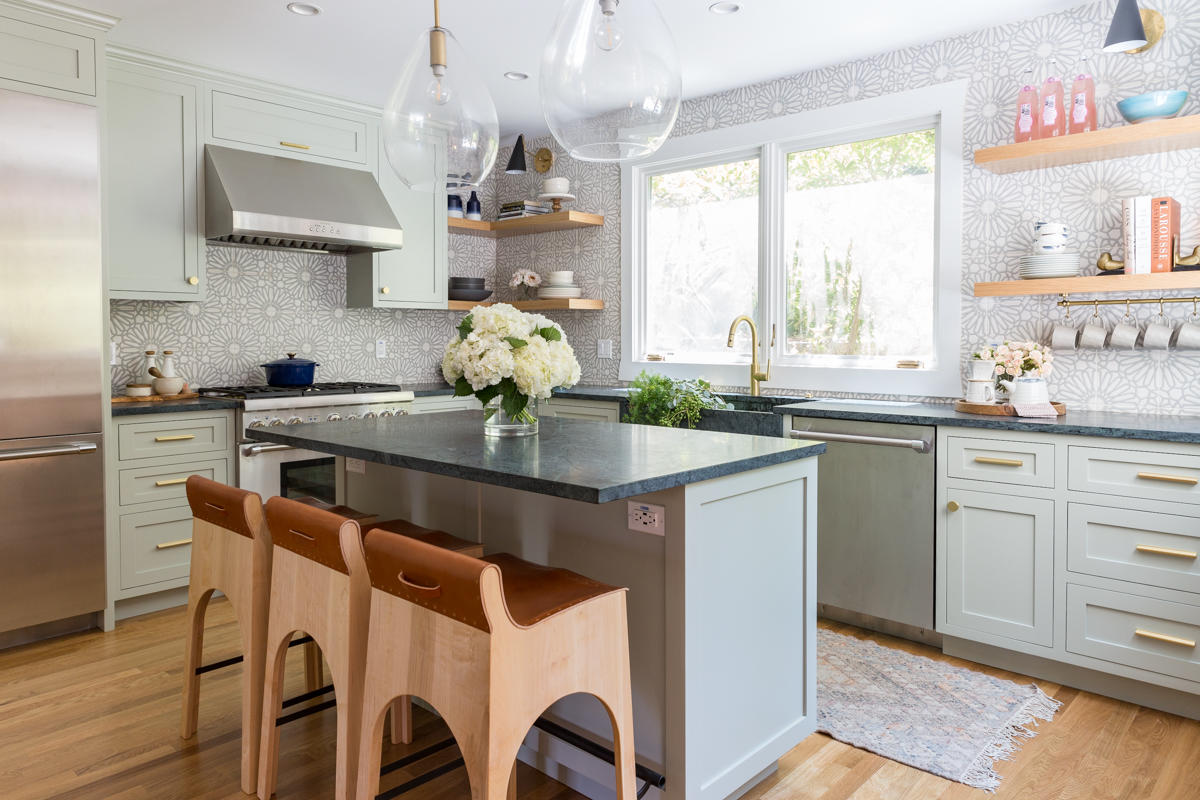
I read a doom-and-gloom headline the other day that said a lot of people are leaving the Bay Area. Do you feel that?
I read that, too, and I feel like there’s a bit of exodus out of San Francisco specifically, but in Oakland and the East Bay, the people here are firmly entrenched. It’s also a difference in age of client, and my clients are solidly—I don’t know, what’s “middle-aged” at this point? But they’re established professionals with children, so it hasn’t really affected us. We got more calls in the month of January than I probably got in the last 10 years.
How does that change when you move to Atlanta?
As of right now, there will be no change. We’ll be acknowledging that I’ve opened up another office, but I’m not changing anything. We actually just bought an office in Oakland, so I’m doubling down on Oakland. I’m obsessed with California, so there is a part of me that hopes we come back full-time.
In Atlanta, we’re going to focus more on new builds and developer work—things that are easier to implement without a massive team in place. I think all individual client work will still flow through Oakland, whether it’s a project in D.C., New York, L.A. or Atlanta.
So you aren’t going to build a separate team around you in Atlanta?
The most I would have is maybe one assistant, but I don’t intend on opening a large office there at this point. There are so many qualified designers that are already established and doing residential work, and I am happy to concede Atlanta to them.
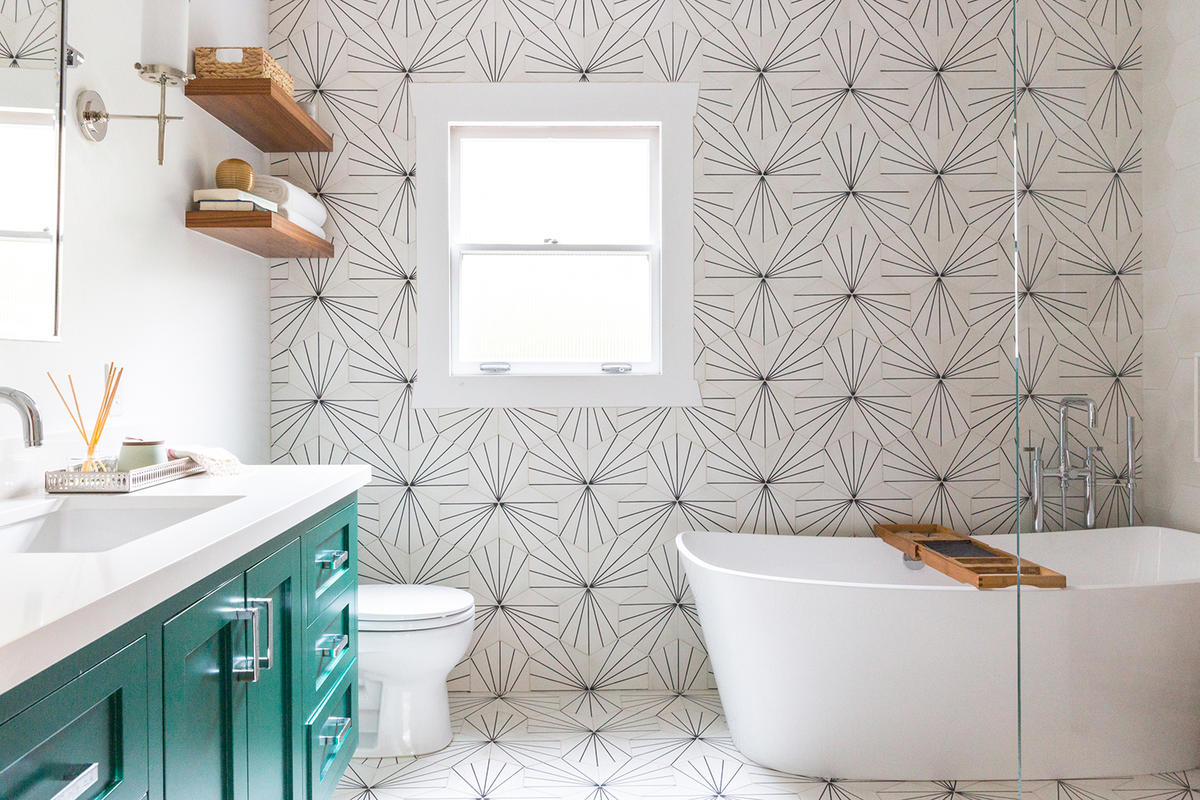
I know it’s hard to feel a sense of community when everyone’s stuck at home, but what is the design scene like in the Bay Area?
I started a Mastermind with other Bay Area designers three or four years ago—a group for designers where this is their second career. We meet monthly to talk about business and life. We have a Slack channel, and that’s kind of been my lifeline to the local design scene. We’re all in the Bay Area, so we are all somewhat competitive, I guess. But it doesn’t matter, because I am a firm believer that I don’t have any competitors. People who call me, they either want me or they don’t, and there’s nothing that can convince them otherwise.
Otherwise, there hasn’t been a lot going on over the past year, right? The pandemic happened, we all thought we weren’t going to have any business, and then by Q4 we were all pleasantly surprised when people started calling again.
As a Black designer, everything started coming to a head in the summer, and since then there have been a lot more opportunities to speak out and be present [in the community] in a way that just wasn’t available before—it was a scene that was always looking at the same people over and over. There are some people who are getting a ton of attention and some people who aren’t, but that’s really been a big deal for me. I’m also a member of the Black Artists + Designers Guild, and this year I really invested in becoming a very active member of the Obsidian [Virtual Concept House] committee.
What did being on the committee entail, and how did the concept house come together behind the scenes?
When I first joined the Black Artists + Designers Guild, there were no other West Coast people that I knew, so I felt really isolated. But when the pandemic happened, they started doing weekly meetings. I was like, What do I have to lose? I’ll go, hopefully I’ll meet some people—some of my idols, right? And in the first meeting I joined, the idea of Obsidian started to come up.
At first, it was a conversation about showhouses, and how we never get to do them. I was super bitter about the San Francisco Decorator Showcase, which is not diverse at all. I mean, this year was my first time ever applying, so honestly, who knows if I would have made it in anyway, but I know of five other diverse candidates who applied with me and none of us got it.
Our conversation went to: What if we started our own showhouse? And that was the start of it. I volunteered to join a committee, and the five of us have met every week since March. I was the participant liaison, so I was the one sending emails to the 25 participants saying, “This is due on this day, I need your stuff.”
That’s a tough job—but the results are extraordinary!
It was a labor of love, but it’s been more rewarding than anything I can imagine—the relationships I’ve made on the committee alone, in addition to being in contact with so many Guild members, it’s worth everything I did.
As a Black woman, to be in the Bay Area can be really difficult in a lot of ways. That’s why I joined BADG in the first place—it made me feel less alone. Everything about Obsidian is amazing, but underlying Obsidian is the fact that the Guild has created an environment that celebrates Black power and Black artists in a way that previously hasn’t been done. And it’s something to really behold, right? As a person who’s privileged to be a member—because there are real standards and all that stuff—and getting to sit next to my idols and see what they’re doing, it’s been really meaningful for me.
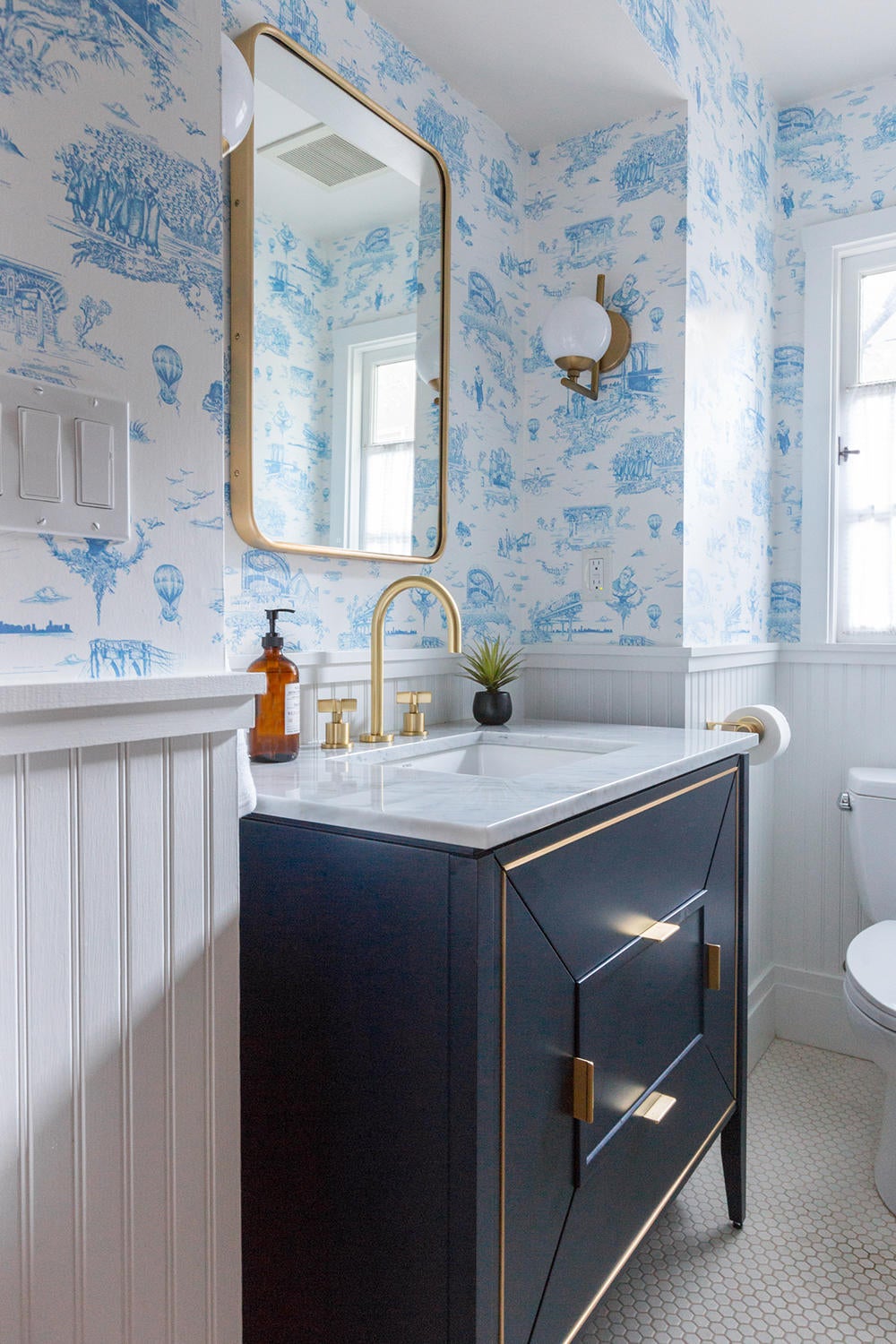
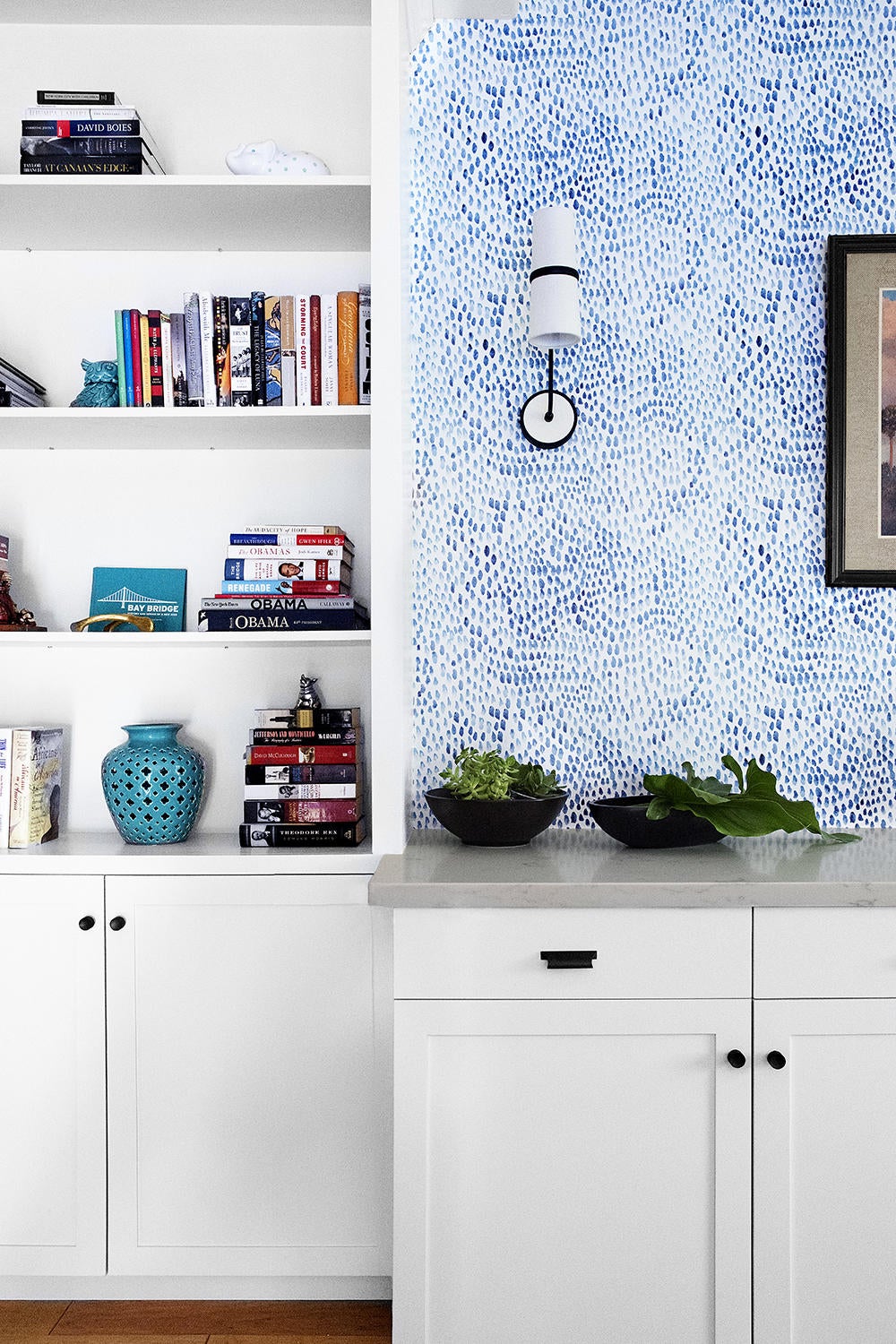
I also wanted to ask you about your nonprofit.
I worked with my old law firm to help me create a nonprofit called Joy Street Initiative, where we design and provide all the furniture and resources for women’s shelters.
Before we were an official nonprofit, I would have volunteer groups come in and do something here or there—we would paint a dining room, put up some pictures, and call it a day. And then the last time we did it, the people that volunteered were so bad—it was so painful that I ended up just paying my handyman to go back and fix the problems. That’s when I decided that we should only be providing services that we would provide to our paying clients. Just because you are living in a shelter—even more so because you are living in shelter—you deserve to receive these gifts with dignity and respect. And having somebody who has never painted before come into your home and do such a bad job was just unacceptable to me, so we created the nonprofit in 2018 to provide these services with dignity and respect.
That’s amazing.
Right now we have a partnership with an Oakland transitional women’s shelter, and we go in and redo rooms. We pay for real labor, we do all the furniture—and everything’s new. We take donations from some of our vendors, but everything is brand new and we treat it as if they are real clients. We’re also in the middle of a campaign to redo their kitchen, which hasn’t been redone in God knows how long, and to provide all of those services—we’re working more with our vendors to get things donated for that, but we’re going to pay for the labor.
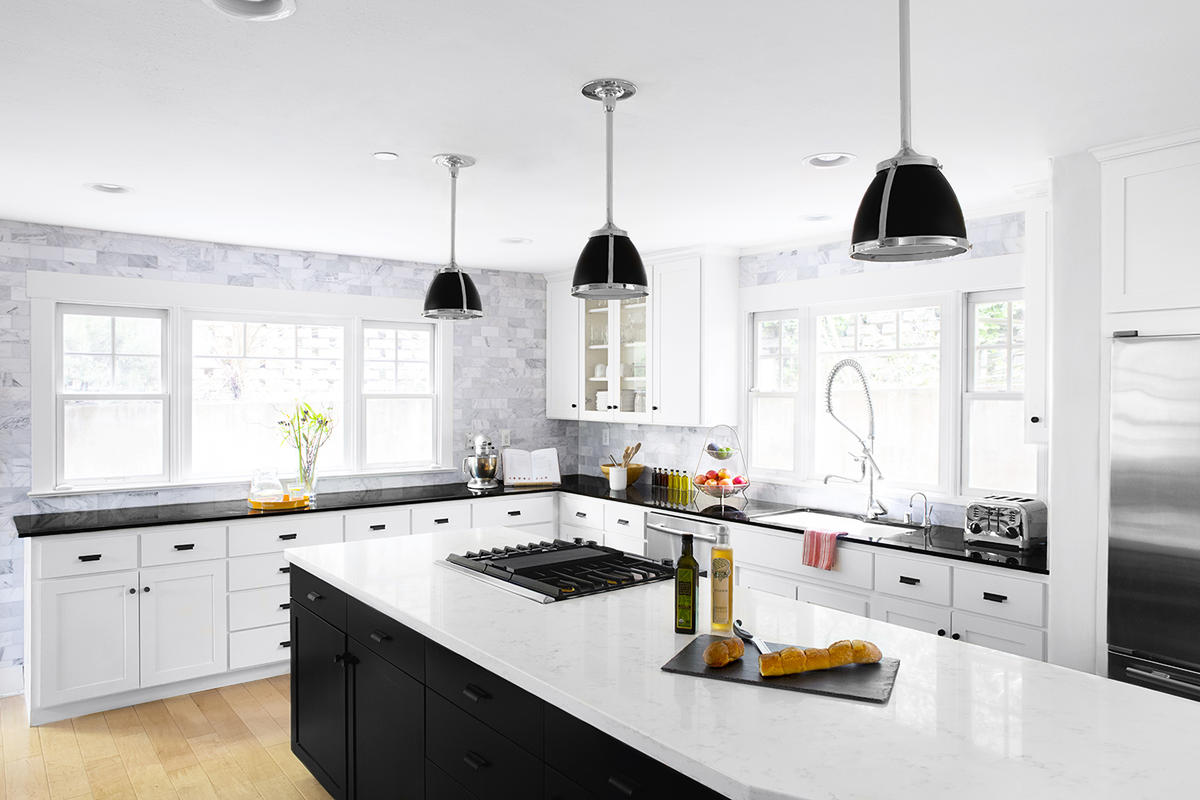
Do you accept donations?
Yes—I mean, if someone wants to give us a donation, we will take it, but every dollar up to this point has come from Joy Street Design.
How do you fund the nonprofit?
Ten percent of our profits go to Joy Street Initiative.
In this position, I have the ability to give back. This is a way that I can use our firm’s unique skills to improve the lives of people in a way that other people don’t think about. What we do is considered privileged, but I think people discount how much home really equals safety and comfort. What we do in the nonprofit is show the very bare knuckles of what that really means.
The shelter we work with, because they are only transitional, the women have to leave after 18 months. They’ve told us that the women who get the rooms that we’ve made over just feel different—they come in differently, the children come in differently. They’ve never had their own bedroom or special sheets, so all of that stuff feels really meaningful to them. I wish we had more profits so I could give more stuff. That’s the goal.
You just did an interview for this series with Zoë Feldman [in Washington, D.C.], who said that she changed her consultation fee to go to charity. We haven’t implemented it yet, because I haven’t quite figured out the wording, but after reading that, I decided that we are going to make our consultation fee a donation to the nonprofit.
Oh, gosh, that’s incredible.
It gives more money to the nonprofit—we’re only giving 10 percent of our profit to the nonprofit at this point, which is only so much. But if we do three or four consultations a month, that gives more money to the nonprofit, gives clients more money to write off, and it makes me feel better.
I was going to ask you what success looks like to you—but is that it?
Success to me looks like a well-funded organization for sure, and then we can provide our clients with everything that they’re asking of us, but at the same time to have the side nonprofit organization that’s fully funded, and [be] able to provide homes—maybe fully furnished homes for people transitioning out of shelters. They are trying to take a big step, and being able to provide that would be huge.
To learn more about Kelly Finley, visit her website or find her on Instagram. To learn more about her nonprofit, Joy Street Initiative, click here; to make a donation, click here.
Homepage image: Kelly Finley | Jana Pearl
















